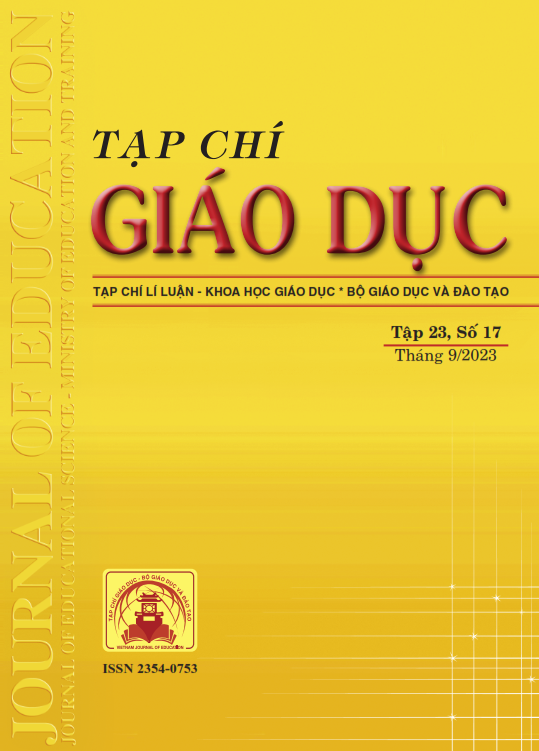Nhận thức và thái độ của giảng viên tiếng Anh ở các trường đại học tại Thành phố Hồ Chí Minh về việc sử dụng phương pháp “giàn giáo” trong môn Viết học thuật
Tóm tắt
This mixed-method study examines the effectiveness of implementing the scaffolding technique into teaching Academic writing in the universities context by exploring the perceptions and attitudes of a randomly selected group of teachers from several universities in Ho Chi Minh city. Using surveys and interviews to collect data, this study aims to answer these following questions: (1) To what extent are university English teachers aware of scaffolding in teaching Academic Writing?; (2) What are the perceptions and attitudes of university English teachers towards the scaffolding technique in teaching Academic Writing? Although the findings demonstrated the emergence of scaffolding technique in the progress of teaching Academic writing, and educators’ point of view in respect of practical features were exceedingly positive, the participants seemed to be less confident when it comes to explaining practical and pedagogical scaffolding. This study aims to close the gap in the existing literature on scaffolding techniques, especially concerning university lecturers’ perception and attitude towards applying the very technique in teaching Academic Writing.
Tài liệu tham khảo
Awadelkarim, A. (2021). An analysis and insight into the effectiveness of scaffolding: EFL instructors’/teachers’ perceptions and attitudes. Journal of Language and Linguistic Studies, 17(2), 828-841.
Graham, S., & Perin, D. (2007). A Meta-analysis of writing instruction for adolescent students. Journal of Educational Psychology, 99(3), 445-476. https://doi.org/10.1037/0022-0663.99.3.445
Maryantini, N. W., Marhaeni, A. A., & Dewi, L. P. (2020). The effect of scaffolding strategy on learner autonomy and writing competency of senior high school students. English Language Education, 8(2), 31-40.
Mohammed, M. F. (2020). Scaffolding with Online Tasks for Developing Critical Writing Skills of 2nd Year Secondary School Students. Journal of Education, 76, 86-148.
Rababah, L., & Almwajeh, M. (2018). Promoting creativity in EFL/ESL writing through scaffolding strategy. International Journal of English and Education, 7(3), 148-160.
Schwieter, J. W. (2010). Developing Second Language Writing Through Scaffolding In The ZPD: A Magazine Project for an Authentic Audience. Journal of College Teaching & Learning (TLC), 7(10), 31-46. https://doi.org/10.19030/tlc.v7i10.154
Tran, C. N., & Nguyen, H. B. (2021). Teachers’ perceptions of Scaffolding EFL students’ reading comprehension at high schools in the Mekong delta, Vietnam. European Journal of English Language Teaching, 6(5), 65-80.
Van de Pol, J., Volman, M., & Beishuizen, J. (2010). Scaffolding in teacher - student interaction: A decade of research. Educational Psychology Review, 22, 271-296.
Võ Thị Kim Anh (2015). Sử dụng E-Learning như một công cụ hỗ trợ phát triển kĩ năng viết ở Khoa tiếng Anh, Trường Đại học Ngoại ngữ Đà Nẵng. Tạp chí Khoa học và Công nghệ, Đại học Đà Nẵng, 4(89), 1-5.
Vonna, Y., Mukminatien, N., & Laksmi, E. D. (2015). The Effect of Scaffolding Techniques on Students’ Writing Achievement. Urnal Pendidikan Humaniora, 3(1), 227-233.
Wood, D. J., Bruner, J. S., & Ross, G. (1976). The Role of Tutoring in Problem Solving. Journal of Child Psychiatry and Psychology, 17, 89-100.
Tải xuống
Đã Xuất bản
Cách trích dẫn
Số
Chuyên mục
Giấy phép

Tác phẩm này được cấp phép theo Ghi nhận tác giả của Creative Commons Giấy phép quốc tế 4.0 .












